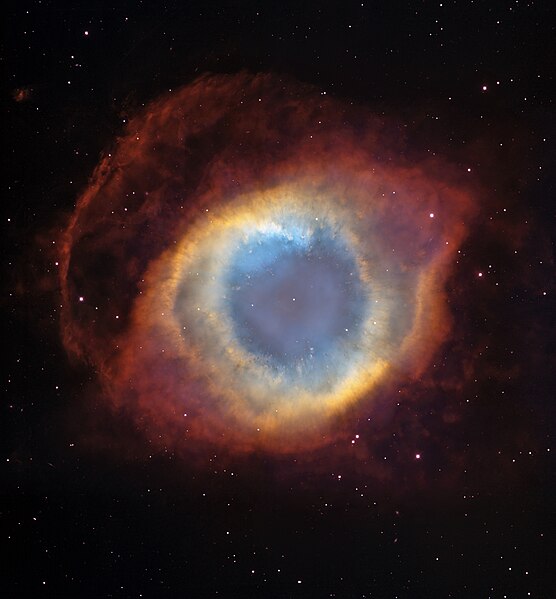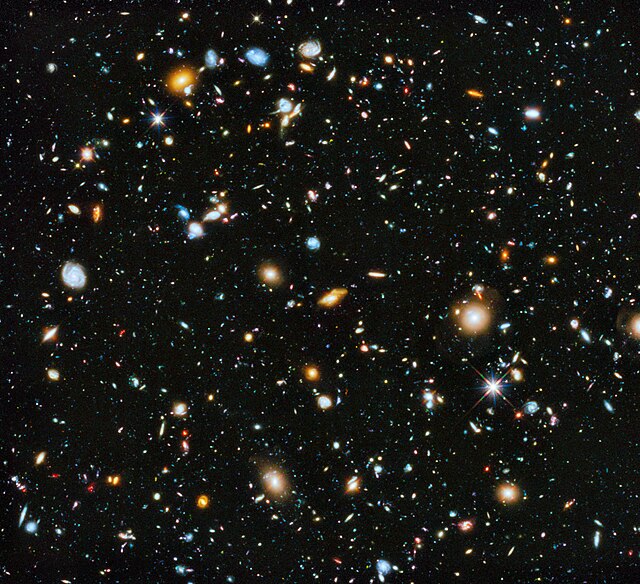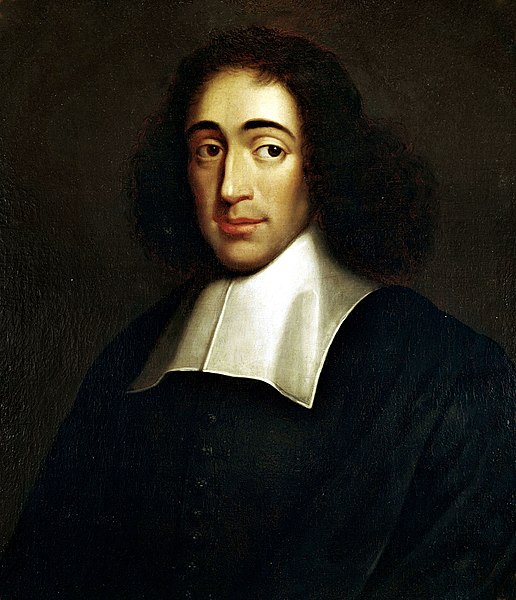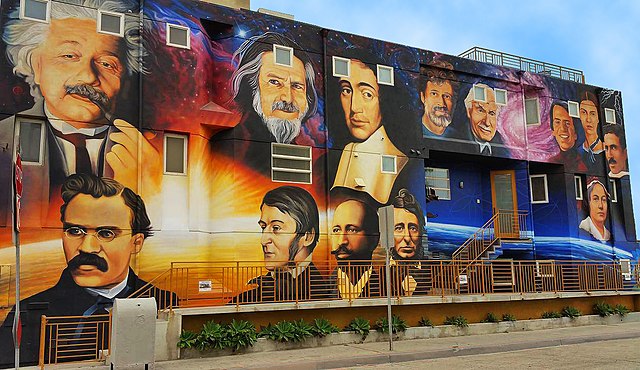Panentheism is the belief that the divine intersects every part of the universe and also extends beyond space and time. The term was coined by the German philosopher Karl Krause in 1828 to distinguish the ideas of Georg Wilhelm Friedrich Hegel (1770–1831) and Friedrich Wilhelm Joseph Schelling (1775–1854) about the relation of God and the universe from the supposed pantheism of Baruch Spinoza. Unlike pantheism, which holds that the divine and the universe are identical, panentheism maintains an ontological distinction between the divine and the non-divine and the significance of both.
The Helix Nebula, commonly named the "Eye of God"
Depiction of the Vishnu Vishvarupa (Purusha), within which all the devas and universe is contained
Guru Nanak talking to hindu sadhus (holy men)
Pantheism is the philosophical religious belief that reality, the universe, and nature are identical to divinity or a supreme entity. The physical universe is thus understood as an immanent deity, still expanding and creating, which has existed since the beginning of time. The term pantheist designates one who holds both that everything constitutes a unity and that this unity is divine, consisting of an all-encompassing, manifested god or goddess. All astronomical objects are thence viewed as parts of a sole deity.
Pantheists believe that the universe itself and everything in it forms a single, all-encompassing deity.
The philosophy of Baruch Spinoza is often regarded as pantheism.
Levi Ponce's Luminaries of Pantheism mural in Venice, California for The Paradise Project
Albert Einstein is considered a pantheist by some commentators.







